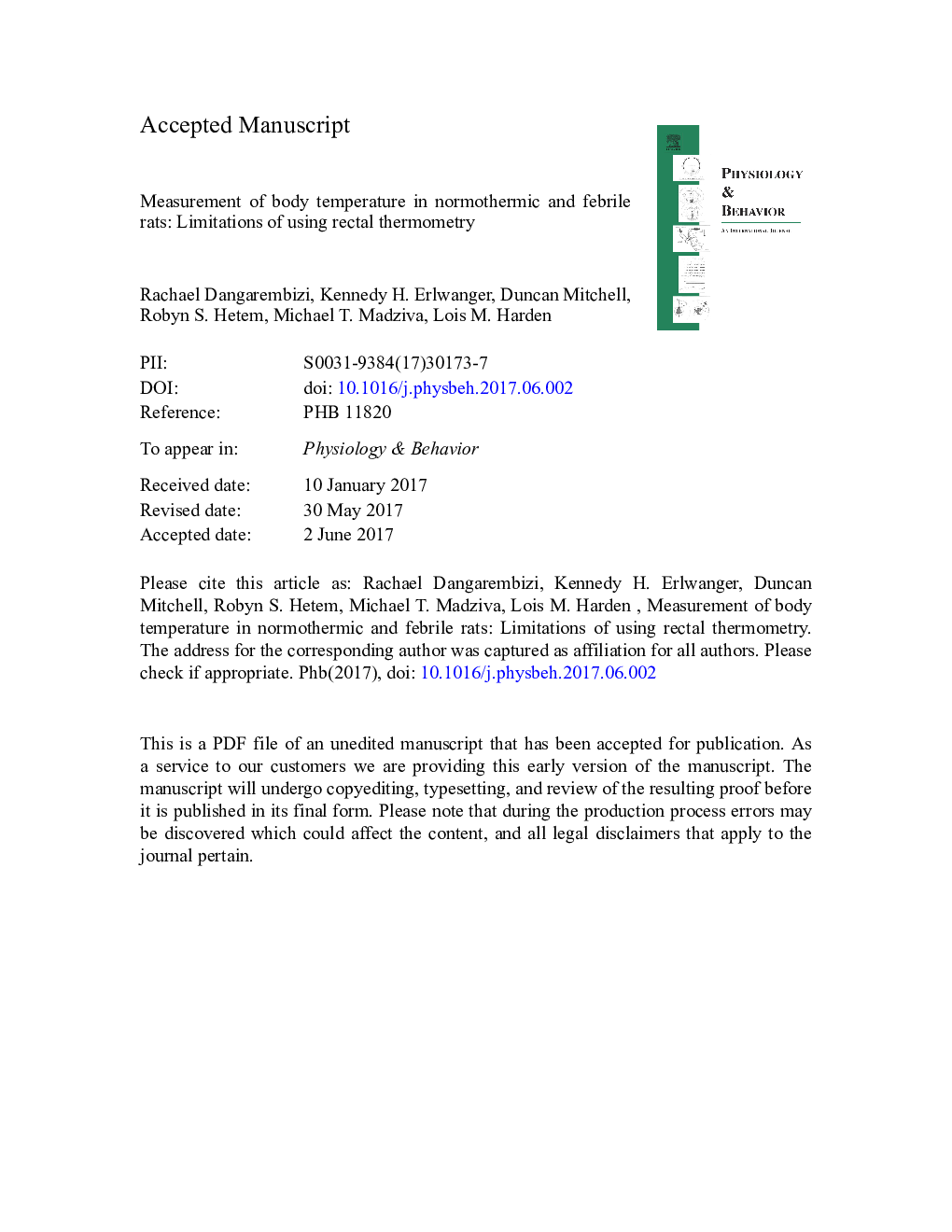| Article ID | Journal | Published Year | Pages | File Type |
|---|---|---|---|---|
| 5593638 | Physiology & Behavior | 2017 | 28 Pages |
Abstract
Stress-induced hyperthermia following rectal thermometry is reported in normothermic rats, but appears to be muted or even absent in febrile rats. We therefore investigated whether the use of rectal thermometry affects the accuracy of temperature responses recorded in normothermic and febrile rats. Using intra-abdominally implanted temperature-sensitive radiotelemeters we measured the temperature response to rectal temperature measurement in male Sprague Dawley rats (~ 200 g) injected subcutaneously with Brewer's yeast (20 ml/kg of a 20% Brewer's yeast solution = 4000 mg/kg) or saline (20 ml/kg of 0.9% saline). Rats had been pre-exposed to, or were naive to rectal temperature measurement before the injection. The first rectal temperature measurement was taken in the plateau phase of the fever (18 h after injection) and at hourly intervals thereafter. In normothermic rats, rectal temperature measurement was associated with an increase in abdominal temperature (0.66 ± 0.27 °C) that had a rapid onset (5-10 min), peaked at 15-20 min and lasted for 35-50 min. The hyperthermic response to rectal temperature measurement was absent in febrile rats. Exposure to rectal temperature measurement on two previous occasions did not reduce the hyperthermia. There was a significant positive linear association between temperatures recorded using the two methods, but the agreement interval identified that rectal temperature measured with a thermocouple probe could either be 0.7 °C greater or 0.5 °C lower than abdominal temperature measured with radiotelemeter. Thus, due to stress-induced hyperthermia, rectal thermometry does not ensure accurate recording of body temperature in short-spaced, intermittent intervals in normothermic and febrile rats.
Related Topics
Life Sciences
Biochemistry, Genetics and Molecular Biology
Physiology
Authors
Rachael Dangarembizi, Kennedy H. Erlwanger, Duncan Mitchell, Robyn S. Hetem, Michael T. Madziva, Lois M. Harden,
